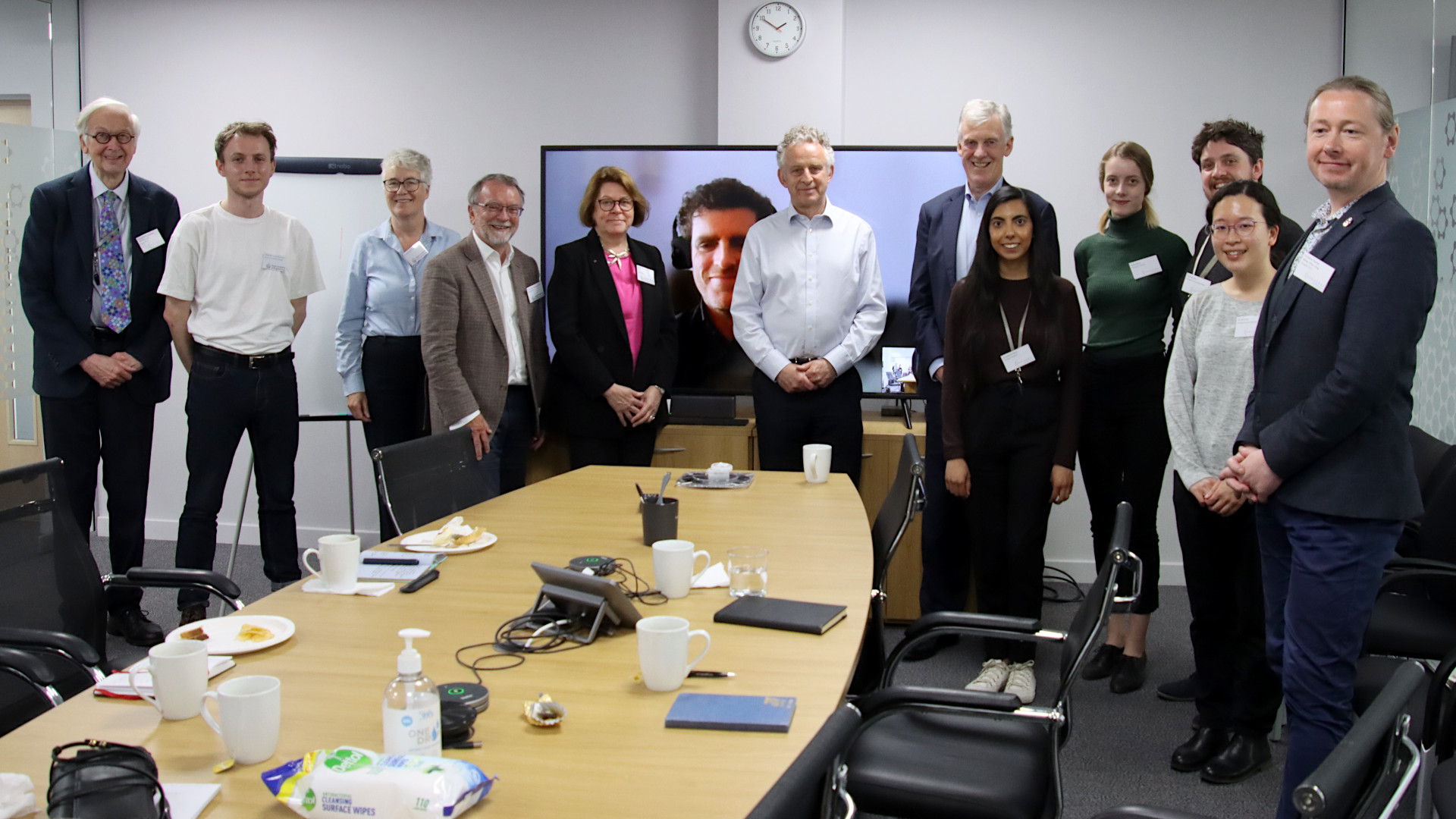As the UK’s longest running and most prestigious prize for engineering innovation, the MacRobert Award attracts a high calibre of submissions each year. With a £50,000 prize, gold medal and opportunity to sit amongst an illustrious cohort of previous recipients – including Rolls Royce, Raspberry Pi & Quanta Dialysis Technologies- the MacRobert judging panel has the unenviable task of selecting just three finalists to be publicly recognised for their extraordinary innovations.
Once an organisation reaches the finalist stage, the MacRobert judges take part in site visits to meet the nominated teams, explore the facilities, and ask difficult questions to get under the skin of each innovation. Following Monday’s visit to nPlan, the judges arrived at Paragraf HQ to learn more about the pioneering graphene electronic device company which had made the shortlist.
Paragraf
The second of the MacRobert site visits took the judges deep into the heart of Cambridgeshire where Paragraf are developing the first real commercial use of graphene in electronic devices.
Upon arrival, the judges were met by the Paragraf team and introduced to this innovative company by Dr Simon Thomas FREng, Paragraf founder and CEO (and RAEng Hub Member). Having previously held a long-standing position within the compound semiconductor industry, Simon was approached by Professor Sir Colin Humphrey CBE FREng FRSE to at the University of Cambridge to unlock the full potential of graphene.
Often hailed as a ‘wonder material’, graphene consists of a single layer of carbon atoms arranged to resemble a honeycomb lattice. It’s this arrangement which provides graphene with its key benefits – not only is it one of most conductible materials in the world, it boasts being extremely flexible (graphene can be bent without breaking) and strong. However, despite these incredible properties, the full potential of graphene has yet to be realised due to difficulty of applying this to practical applications. Simon explained that by developing a process to produce high quality graphene on a non- metallic substrate, Paragraf has successfully produced the first real commercial use of graphene in electronic devices.
While on these visits, judges are always keen for examples of the practical application of the innovation and want to know how the technology impacts everyday life. Simon explained that graphene was already being successfully utilised in various applications through Paragraf's graphene magnetic field sensors. These sensors are highly sensitive, energy-efficient, and capable of operating reliably in a wide range of conditions, outperforming traditional silicon technology. The judges were provided with several examples of where these sensors can be applied - from gas-turbine aero-engines to quantum computing and even high-radiation environments like space. Such applications have also provided opportunities for collaboration with world leading organisations including Rolls Royce and NPL. The judges were quick to recognise the immense potential of Paragraf's advancements, commenting that this innovation not only elevates the UK's position as a leader in technological innovation but also paves the way for rapid growth and new job opportunities, not only in the UK but also internationally.

The MacRobert judges meet with the team from Paragraf
“Paragraf has produced the first real commercial use of graphene as an electronic material - though this sector of the economy has dropped off the radar in the UK, it is thriving globally and there is scope for rapid growth and associated jobs.”
Dr Rajapillai Ahilan FREng, MacRobert Award judge
There is excitement throughout the organisation about the future applications of graphene. One such venture is the use of graphene within biosensing. The judges heard how Paragraf is teaming up with companies to expose graphene to tiny biomolecules. When these molecules accumulate on the graphene's surface, the conductance of the graphene changes, thanks to smart coatings. This discovery is super exciting and has huge potential in accelerating the effectiveness of biosensors.
Looking further into the future, Paragraf confirmed the future of technology beyond silicon will involve the use of new materials. Paragraf believes its methods can go beyond graphene and delve into the realm of creating two-dimensional semiconductors and insulators. These cutting-edge materials are at the centre of their current research – the judges were excited by what this could mean for the future of electronics.
At the conclusion of their visit, the judges were given much to discuss as to the effectiveness of graphene and the innovative methods by which Paragraf were utilising this method to be as effective as possible. What was clear across the panel was the calibre of finalists this year was going to make for some difficult conversations later in week. The judges eagerly anticipated their final visit to Ceres Power before coming to make the decision as to who would be named the winner of the 2023 MacRobert Award.
The MacRobert Award finalist team from Paragraf includes:
- Dr Simon Thomas FREng, Paragraf founder and CEO
- Professor Sir Colin Humphreys CBE FREng FRS, Paragraf founder and CSO
- Dr Ivor Guiney, Paragraf Technical Director
- Dr Hugh Glass, Paragraf Technology Owner
- Rosie Baines, Paragraf Scientist
- Dr Jaspreet Kainth, Paragraf Growth Scientist
- Dr Lok Yi Lee, Paragraf Senior Scientist
The MacRobert Award is the UK’s longest running and most prestigious prize for engineering innovation. The winning team is presented with a £50,000 prize, a gold medal, national publicity, and a weekend away at Douneside House in the heart of the MacRobert Trusts estate in Aberdeenshire.
Nominations for the 2024 MacRobert Award will open in October 2023. Please contact Patrick Woodcock, MacRobert Award manager, on 02077 660 630 or [email protected] should you wish to discuss putting forward a nomination.
